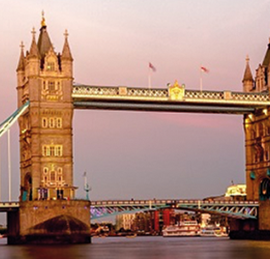Hunterian Museum
Royal College of Surgeons, London, WC2A 3PE, United Kingdom | 020 7869 6560 | WebsiteWhy has a £4.6 million refurbishment in 2023 failed to be inclusive?
1 like
Visit date:
This review is especially helpful for those who have or use the following: Walking Aid
Overview
The Hunterian Museum is a medical museum which houses a fascinating collection of specimens, instruments, painting, models. The Museum includes England’s largest public display of human anatomy. Please be aware that the anatomical specimens include human foetuses. It re-opened in May 2023 following a £4.6 million refurbishment. I was very excited to visit the collection. However, I found myself deeply disappointed. Although the museum appears very accessible on paper, it has step free access, accessible toilet, the room layouts and displays have several access issues. The interior of the museum itself has been designed with no thought given to how disabled people will navigate the exhibition. At the end of my visit I spoke with Anne Griffin, Senior Manager Museum Engagement, to express my disappointment and my concerns. I received a very positive response, she gave me time, listened and took notes. She explained that some of the problems I had identified, namely the signage and layout, had already been noted and the museum were looking at ways to improve the layout of the display. She hoped that I would return in 6 months and see an improvement. I will do this and write a further review.
Transport & Parking
The nearest tube station Holborn is not step free. However, several buses stop nearby on Kingsway, Aldwych and High Holborn, which are about a 5 minute walk away in different directions.
Access
The Hunterian Museum is located inside the Royal College of Surgeons building. There are two entrances, both are step free. Lincoln's Inn Fields entrance. This is the entrance I used. Lincoln's Inn Fields is a large London garden square, with a park in the centre. The Royal College of Surgeons building is located on the south side of the square. It's a large imposing classical styled building with a portico. Signage is extremely poor, as it is not visible or readable from any distance. The Royal College of Surgeons is written on the gate posts but you would have to stand directly outside the building to read it. Next to the right hand side gate is a small notice board with a small poster about the museum. In front of the right hand side, large, double entrance gates there is a little bit of cobblestones. From these gates, you can enter either by ascending four steps with no hand rail or use the permanent ramp on the right hand side of the building. If you use the ramp be aware that there is a 90 degrees turn. The entrance door is automatic double doors. This brings you into a small foyer with some bench seating with no back support or arms. Then there is another double door with a press button to open the doors which leads into the main reception area which leads into the museum. Portugal Street entrance. I didn't use this. However, there is an internal self-operated platform lift, which comes out into the café area, and leads through to the main reception area. PEEP (Personal Emergency Evacuation Plan) When I arrived I was asked to go to the reception desk to complete a PEEP (Personal Emergency Evacuation Plan). The reception desk was at two different heights. I have never been asked before to complete a PEEP when I have visited ANY museum before. I feel in two minds about this. I am pleased that they are taking disabled people's safety in event of a fire seriously, when alas recent years have shown that general neglect of this has resulted in disabled people's deaths. However, there is nothing on their website to prepare you for this. This might be ok for some, but if you are a disabled teenager out with your friends, or your in a group where you don't necessarily want to draw attention to your disability, it could feel quite uncomfortable being singled out. Also the paper form is about 3 sheets long, not all the questions are relevant and a couple of them when read out sound like they are asking for medical information rather than you access needs. Some people will feel very uncomfortable doing this, especially as it is not something normally asked of by a venue. I forgot to ask what happens to my personal, sensitive medical information, it has my name on it, as when I left it was sitting on the reception desk. The Hunterian Museum Positives The collection is outstanding and utterly fascinating. The museum is free to visit. The museum is on the ground floor and is entirely step free. The entrance door was open and the exit door was a push button. There are five benches with arm supports, no back support but next to a wall, throughout the museum. There are mobile foldable stools available to collect in the first gallery. There was one exhibit the Evelyn Tables, which had a model of nerves/ blood vessels (sorry I am not medical) which had braille around the edges. Unfortunately, this was not signage with this, so it would be easily to miss. In another gallery there was an interactive book. On one page the images changed and on the other page the spoken words appeared. There was no audio description of the images. In the Transforming Lives gallery there was a video which had subtitles. Access Difficulties The museum has been re-located from the first floor to the ground floor and is now not as large as it previously was. No large print guides. This has already been identified as an issue and something that Anne Griffin is already onto sorting out. Low lighting levels. Throughout the museum, due to the exhibits, the lighting levels are low. There is no signage at the entrance or information on the website to prepare anyone for this. There are a number of floor to ceiling glass cabinets and case top hood displays, and the low level lighting levels might not make it easy for visually impaired people to safely make out the outline of the display cabinets. Signage. The signs, apart from those in the Long Gallery, are raised or at an angle, which makes it easier to read than lying flat. However, the signs are white on small, silver grey, which look very nice, but are extremely hard to read, due to their size and colour contrasts. I wear reading glasses and found I could only see them clearly when I was directly face on to them. Often when galleries are busy, I am able to read the sign even if someone in front of me is looking at the exhibition, so this slows down my movement around the gallery. There is also no clear signage from one room to another, this is particularly a problem in the Long Gallery. Display. There are many floor to ceiling cabinets, particularly in the Long Gallery. Many have 4 shelves. Due to my disability I am unable to bend down and see the bottom shelf. Wheelchair users may well struggle to view the top shelf. In the Making a Surgeon gallery, just before the entrance into the Long Gallery, there are two floor to ceiling cabinets. The left hand side cabinet is squashed in so I was just about able to fit in with my crutch. I do not think a powerchair user would be able to fit into the space. Why has a £4.6 million refurbishment in 2023 failed to be inclusive? Wheelchair users and people with mobility disabilities are not going to be able to see all the exhibition comfortably or safely. This is shameful, discriminatory, ableist and totally unacceptable. Layout. The museum crams a lot into a small space. However, it is done without consideration to disabled people's access needs. I am unsure of width to the entrances to all the galleries but I feel they would be tight for wheelchair users. In particular the Long Gallery is very narrow and there are floor to ceiling glass cabinets on both sides, there is a lot to see. I visited on a Saturday afternoon and there were bottle necks as people looked at the exhibition. The width of the Long Gallery comfortably accommodates two people but is someone is a wheelchair user or has an assistance dog it's going to be a tight squeeze.
Toilets
Off the main reception area is an accessible toilet. It has a manual door, does not require a RADAR key and is kept unlocked. It is large, L shaped. The main area is very spacious, clean and uncluttered. It has grab rails and an emergency cord which was reaching freely towards the floor. I was very impressed that there was a machine with free sanitary towels and tampons. I would suggest moving the hand towel dispenser nearer to the sink as at the moment being in the corner, wheelchair users have to navigate the bin and radiator to access it. Very impressive accessible toilet, it's just a shame as part of the refurbishment they could not have made it a Changing Places toilet. On the website they list that the nearest Changing Places toilets are at Great Ormond Hospital (would non disabled people want to visit a hospital on their day out just to use a toilet that is accessible to their needs? I don't think so) and the Wellcome Collection.
Staff
The staff were exceptional. They were welcoming and friendly. Denise filled in my PEEP when I arrived. When I was leaving Anne Griffin, Senior Manager Museum Engagement, so I could raise my concerns about access directly with her. I felt respected, listened to and heard.
Anything else you wish to tell us?
The Hunterian Museum is extremely disappointing when it come to access. I arrived at the Long Gallery, which visually the most impressive part of the museum and realised I was not going to be able to bend down to see a quarter of the gallery, and I gave up on the whole thing then. While the museum refurbishment looks very slick, it is style over substance, what it looks like is more important than being inclusive and accessible. As a disabled person it makes me feel very unwelcome and extremely disappointed. How can you spend £4.6 million on a refurbishment and make a venue so inaccessible? No thought has been given to how disabled people of different impairments might access and enjoy the museum safely. In 2023, that is shameful.











 Follow Euan's Guide on Instagram
Follow Euan's Guide on Instagram
 Follow Euan's Guide on LinkedIn
Follow Euan's Guide on LinkedIn
 Follow Euan's Guide on Facebook
Follow Euan's Guide on Facebook


Comments
You have to be signed in to leave a comment.
Login / Signup